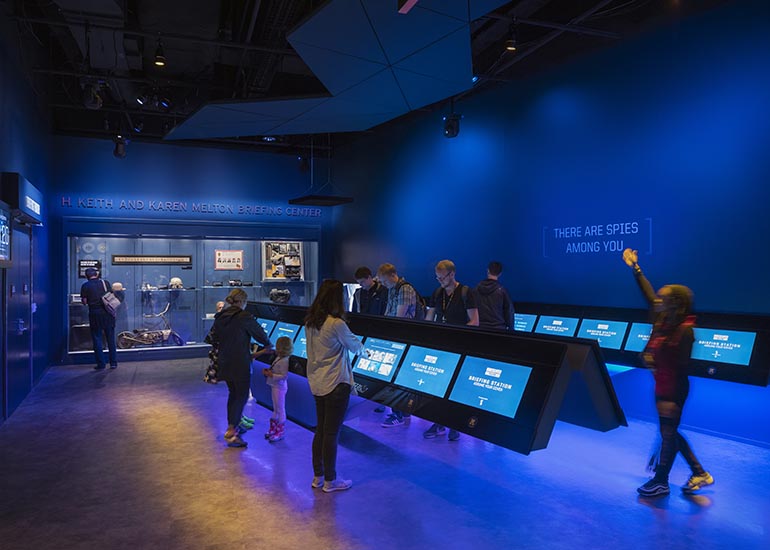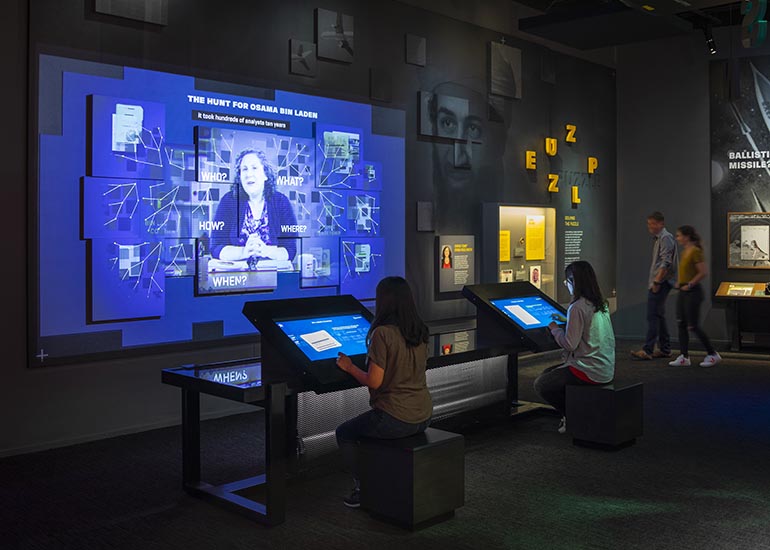INTRODUCTION
When the International Spy Museum relocated to a new site, the owners wanted to use the space to give the museum a more international perspective and to involve visitors more deeply in the contribution of a profession that has helped shape world history.
The experience here is part museum and part game. Interactive and immersive exhibits let visitors experience what it takes to be an officer, agent or analyst working in the shadows, sometimes with life or death consequences.
Visitors take on an ‘Undercover Mission’ identifying themselves with a personalized interactive lanyard. They interact with displays that challenge them to complete demanding tasks — analyze clues, maintain cover, find and contact sources, collect intel at drop sites and complete other spy tasks. Welcome to the shadowy world of international espionage.










.jpg?width=1500&height=995&name=ELC501_N17_medium%20(1).jpg)





